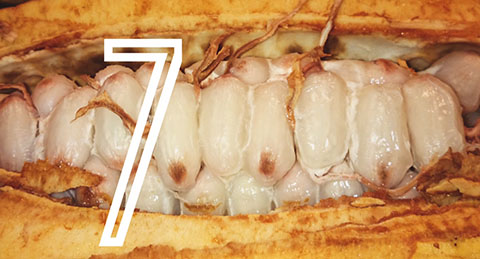On the flavor of single origin chocolate Maricel E. Presilla writes “What distinguishes one natural blend from the other is a matter of the local soil and environment bringing out inherent genetic characteristics, as well as the way in which particular styles of drying and fermentation have distinct effects on overall flavor and aroma.” This statement is a great working definition of terroir. If we simplify it a little more we might say Terroir is: all the factors that give an ingredient from a particular place a particular flavor.
The terroir of chocolate is influenced by many factors, including climate, soil, cacao genes, fermentation and drying, as Prisilla says. One of the particularly cool things about cacao is the huge influence post harvest fermentation has on the flavor. When he spoke to our class Clay Gordon said he believed “Location specific fermentation and drying practices need to be considered part of the terroir”. He referenced the change in flavor when beans from the same trees are fermented in a different way (i.e. a variation in the number of turns per day). We found the research that Ingemann cocoa company in Nicaragua has been doing on this topic on their Facebook page (see below). Mr. Clay Gordon also commented on this page writing, “It shows just how dominant fermentation and drying are when considering the final outcome of the process.” This shows that at least a couple experts consider fermentation a key influence on cacao flavor.
Since fermentation must be done on or near the farm it is the skill of these immediate post-harvest processes that has such a big influence on flavor. This is all the more reason for chocolate makers and chocolate lovers to communicate with, respect, and learn with cacao farmers.
When tasting chocolate in this program we’ve been able to taste terroir mostly through this influence of post harvest processing. The first example of this is the smokey or ‘hammy’ aroma of many Southeast Asian chocolates, which are often dried with mechanical or fire heat. I’ve also been able to taste chocolate which is tanic and overly bitter from poor fermentation. according to Lauren Adler Madagascar chocolate often has a red fruit flavor which we tasted. It would be interesting to learn what gives madagascar cacao this flavor. Is climate, soil, cacao varietals or certain indigenous microbes? With our working definition of terroir I’d guess all of the above.
